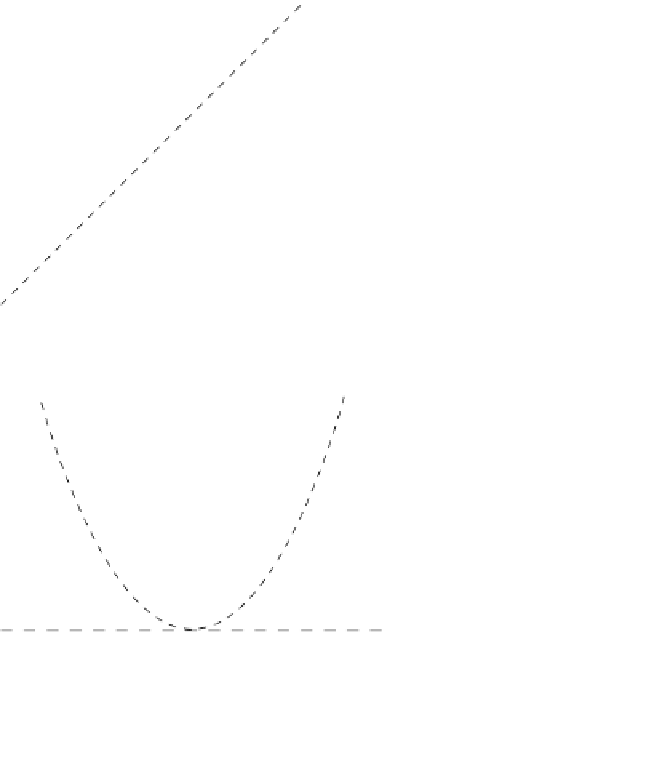Graphics Reference
In-Depth Information
irrational
0
rational
0
x
when
x
is irrational,
when
x
is rational;
g
(
x
)
rational
0
irrational
0
x
when
x
is irrational,
when
x
is rational.
h
(
x
)
Clearly none of these functions is continuous when
x
0, as in
6.20, and therefore none is differentiable when
x
0.
Determine whether either
f
,
g
or
h
is
(i) continuous at
x
0; (ii) differentiable at
x
0.
Another conflict with intuition comes with the discovery that a
function with a positive derivative at a point need not be increasing in
any neighbourhood of that point.
25
(i) Use the methods of qn 22 to show, for the function defined by
f
(
x
)
x
sin(1/
x
) when
x
0, and
f
(0)
0, that
f
(0)
0, but
that
f
(
x
) takes arbitrarily large values near
x
0.
(ii) Draw thegraphs of
y
x
2
x
and
y
x
2
x
near the
origin. Define the function
f
by
f
(
x
)
x
2
x
cos(1/
x
) when
x
0
f
(0)
0.

